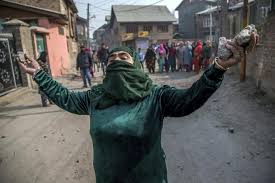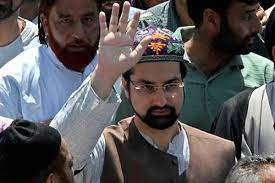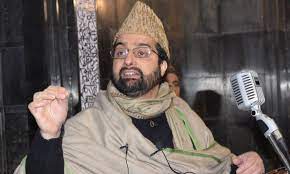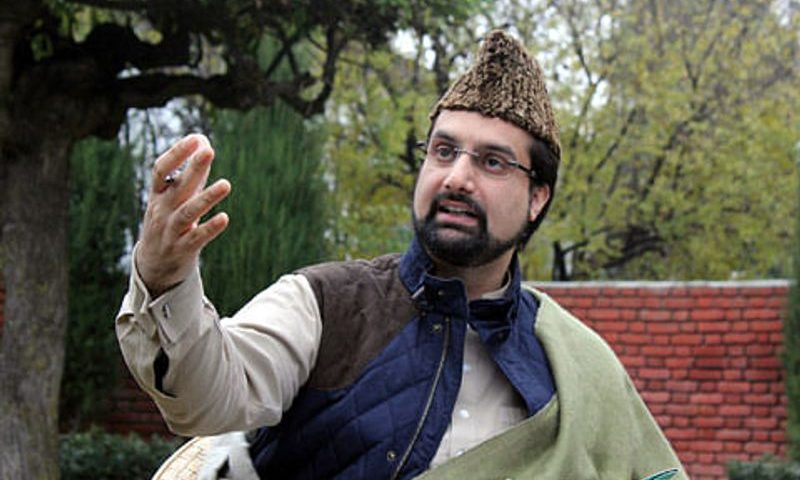 2016 saw Mehbooba Mufti taking over as the first woman chief minister of Jammu and Kashmir and Army claiming to have conducted surgical strikes on militant camps in Pakistan administered Kashmir (PaK) after a militant attack in Uri left 19 army men dead while protests for over five months hit hard normal life and resulted in shutdown of schools and death of 94 people.
2016 saw Mehbooba Mufti taking over as the first woman chief minister of Jammu and Kashmir and Army claiming to have conducted surgical strikes on militant camps in Pakistan administered Kashmir (PaK) after a militant attack in Uri left 19 army men dead while protests for over five months hit hard normal life and resulted in shutdown of schools and death of 94 people.
The government had also to grapple with the NIT unrest, mysterious school burning incidents and blinding due to pellet gun firing issues.
The only silver lining during all this period was that the annual Amarnath yatra to south Kashmir Himalayas went on, though with some interruptions due to authorities’ stopping the pilgrims from travelling during day to avoid any casualties.
In fact, local residents of Bijbehara town defied curfew to help a group of Amarnath pilgrims to hospital after their vehicle met with an accident.
The year, however, started with Chief Minister Mufti Mohammad Sayeed, who had cobbled up an unimaginable coalition government between his PDP and the BJP a year earlier, losing his battle against illness at AIIMS in Delhi on January 7.
Following Saeed’s death, a smooth transition of power was expected to his daughter and political heir Mehbooba Mufti but the PDP president refused to take charge for over two and half months. As the days passed, it seemed increasingly difficult for the two parties to come together again with the PDP setting some conditions like initiation of the confidence building measures by the Centre.
Finally, Mehbooba was sworn in as the first woman chief minister of the state on April 4.
No sooner had she assumed office, Mehbooba faced her first real test. An unrest began at NIT Srinagar where students from outside the Valley were accused of beating local students following a tiff over an India-Pakistan cricket match.
However, the outside students alleged they were tortured by police inside the campus, sparking off a massive crisis that hogged national headlines for several days. The authorities had to shut down the institute for some time to allow the frayed tempers to cool down.
The NIT dust was yet to settle down when Mehbooba’s government faced with two more controversies. The reported plans to set up Sainik colonies and exclusive colonies for migrant Kashmiri Pandits in the Valley drew severe criticism from mainstream opposition parties as well as separatist groups, which threatened to launch an agitation over these issues.
As it appeared that the worst was over for the PDP-BJP government, 21-year-old Hizbul Mujahideen commander Burhan Wani — who had become the poster boy of militancy in Kashmir — was killed in an encounter with forces on July 8.
As the news of his death spread, there was an unprecedented outpour of outrage on the streets of the Valley.
The street protests and clashes between protestors and forces across the Valley over the next five months left 94 people dead and over 13000 injured.
For the first time in the past 26 years of turmoil in Kashmir, over 300 people were blinded as forces fired pellet guns to quell the protests, leading to calls from various quarters to ban its use.
Authorities imposed curfew across Kashmir valley, snapped mobile and Internet services, banned newspapers for three days and took several news channels off air in an attempt to end the street violence but protests continued unabated.
The separatists started issuing weekly agitation calendars as they did in 2010.
Almost all separatist leaders including Syed Ali Shah Geelani, Mirwaiz Umar Farooq and Mohammad Yasin Malik were either arrested or put under house arrest. More than 8,000 people were also arrested on the charges of stone-pelting or incitement to violence. About 500 were booked under Public Safety Act (PSA).
Curfew and shutdowns brought life in Kashmir valley to a standstill as schools remained closed, businesses shut and transport off the roads.
The deadly attack on army base at Uri, close to Line of Control, on September 18 left 19 army men dead. More than a week after the deadly militant attack, army claimed to have conducted surgical strikes on militant launch pads across the LoC. However, Pakistan denied that any surgical strikes by India took place.
As the Valley was going through its worst unrest in 26 years, there was an increase in hostilities along the LoC between armies of India and Pakistan. Both sides accused each other of violating the ceasefire in Jammu and Kashmir along the LoC and the international border.
There were more skirmishes and exchange or artillery fire between the two sides till November, leading to fears among people of outbreak of full blown war between the two countries.
2016 – A year of turmoil for Kashmir






